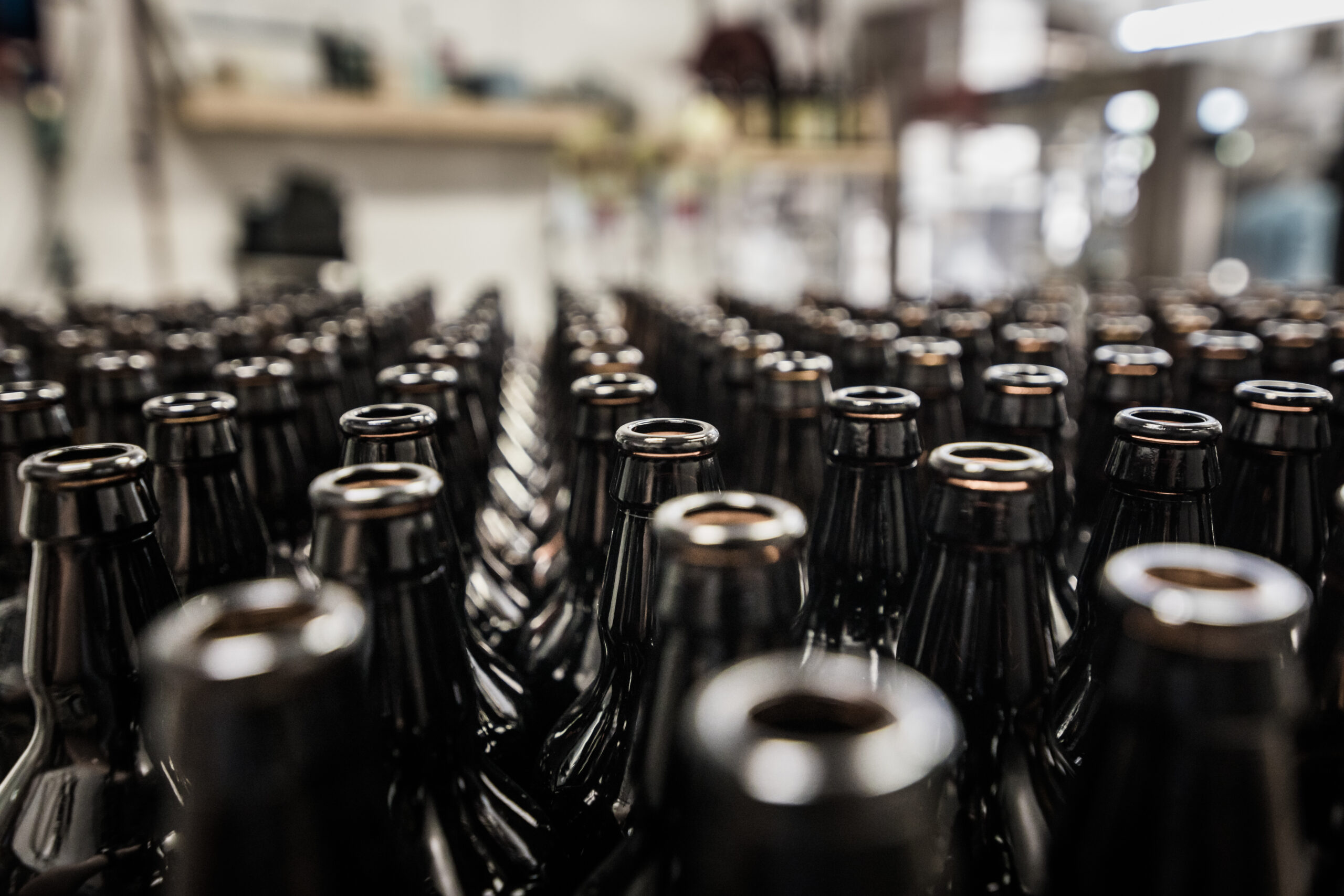Glass bottles can be the component of your spirits packaging with the longest lead time for delivery and—when creating your own designs—the greatest investment. The most logical decision is to offset those delivery issues and production costs by purchasing in higher volumes than might be immediately required. Reducing your cost-per-unit makes a huge difference when calculating margins; price-break quantities are a go-to target. But it’s only beneficial if you know how to calculate the risks and mitigate others by buying ahead and storing glass for long periods.

Common risks associated with storing excess glass bottles and how to mitigate them.
Risk: The price break you receive for purchasing a larger quantity of glass ahead of production needs may be consumed—if not exceeded—by the cost of storing the glass ahead of your bottling production.
Mitigation #1: The first step is to run the basic math—cost per month multiplied by the anticipated number of months you believe you’ll need, then add 10% to account for the quite-common experience of “This is taking longer than we thought.” Divide it by the number of bottles you expect to store. Is that new per-bottle dollar figure higher or lower than the manufacturer’s quantity-discounted price?
If you think this doesn’t apply to you because you plan to store the glass at your own facility, consider it anyway. Carrying inventory has solid costs—the resources needed to maintain good storage conditions, the time and staff that may be needed periodically to move or reorganize the stored goods, and the inability to use that space for anything else (think, something that’ll generate income) until the inventory is gone.
Mitigation #2: Discuss storage options with your full-service packaging and logistics company. While some glass manufacturers will offer to store finished bottles at their own warehouse, the usually available duration is a maximum of three months—and that’s not exactly helpful if you’re looking to purchase a glass to meet your needs for a year!
But a full-service packaging partner like Spearhead includes warehouse support as part of its service offerings. Its global presence and understanding of your production schedule give you cost-effective and efficient options that’ll match your logistics needs without increasing your costs.
Risk: Your sales expectations are interrupted. Ouch. This is a tough one and can happen for reasons that are beyond your control—such as the local impact of international conflicts—or for reasons closer to the business—such as a sudden shift in your distributor’s abilities. Regardless of the reason, you’re the one holding pallets of glass. If it’s a stock bottle, you could re-sell it, but what if it’s your beautiful custom glass?
Mitigation: This one will cost you; there is no way around it. Even if you find the cheapest storage option, there will still be additional costs.
The best option is to make up for that additional cost by digging deep to find additional savings elsewhere in your packaging or production, and this is where the lower demand can work in your favor because you’ll have flexibility. You may be able to negotiate a discount for the label run. The printer can schedule at the last minute when line time unexpectedly opens. (Why would a printer do this? Because giving you a small discount costs them less than idle capacity.)
You can also research and compare different co-packing options—perhaps finding a smaller provider that is closer to your facility. This will provide freight savings that’ll compensate for your other costs.
Risk: Your storage conditions will cause your empty glass to “bloom” and render it unusable without costly processing. “Bloom” refers to the cloudiness or pale streaks that appear inside glass bottles that have been stored for a long period of time, under conditions with changing humidity and temperature. A little moisture makes its way into the glass bottle, the moisture interacts with minerals naturally occurring in glass, and leaves behind a pale residue when it dries.
Mitigation #1: Ensure your glass manufacturer properly treats your glass with known bloom-retarding processes. The benefits are immense, and many manufacturers provide the service as a standard. But never assume! Always ask. Bloom can’t be held off indefinitely but can be delayed.
Mitigation #2: Control your storage conditions. Humidity accelerates bloom, and it’ll appear even sooner when the temperature fluctuates, too. Glass stored near a loading dock—where every inbound and outbound shipment exposes the interior to the outdoor weather—will show bloom before glass in a climate-controlled storage area that’s not often accessed.
Mitigation #3: Bottle ahead of demand. This isn’t ideal, as finished goods are more expensive to warehouse than their raw materials, but a few calculations may reveal it’ll save you from financial loss over the long run when long-term glass storage is unavoidable.
Leveraging Professional Expertise for Your Bulk Buying Strategy
As with every decision you make for your business, quantity discounts should be assessed for their hidden costs and evaluated for disadvantages as well as advantages. Doing this well for all your packaging components can be time-consuming and complex. If you want the benefit and savings of professional experience and coordination, contact our Product Development Team for immediate solutions.
